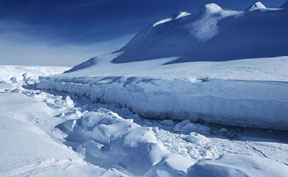 KOLKATA: Geologists have found evidence supporting the hypothesis that Indian subcontinent was part of Antarctica a billion years ago but were separated and re-united several times due to tectonic movement of plates before the evolution of mankind.
KOLKATA: Geologists have found evidence supporting the hypothesis that Indian subcontinent was part of Antarctica a billion years ago but were separated and re-united several times due to tectonic movement of plates before the evolution of mankind.
A group of geologists from India and Switzerland researching on evolution of the Earth’s crust studied ancient rocks of the continental crust in the Eastern Ghats area and found important clues to the formation of the continents.
“It is for the first time that we have been able to prove the hypothesis that the continent of Antarctica and subcontinent India were once a single large continent that broke apart about 1.5 billion years ago,” IIT Kharagpur geologist Dewashish Upadhyay, who led the research told PTI.
India and Antarctica then got separated by an ocean.
“This ocean closed again with the movement of the landmasses and the two continents approached each other until they collided again around one billion years ago to form the Eastern Ghats mountain belt,” he said.
Their research, which was recently published in international journal ‘Elsevier’, shows the two continents separated once more and a new ocean was formed where the old ocean had been.
“Then the movement of the continents reversed again and there was yet another collision around 600 million years ago which created another mountain range that is preserved in the Eastern Ghats all the way to southern India and Sri Lanka and even Madagascar, which was once part of the Indian subcontinent,” Professor Klaus Mezger of the Department of Geological Sciences at the University of Bern, Switzerland, said.
After this collision the crust broke apart again, once more separating India from Antarctica and now there is a big ocean between the two land masses that had actually combined several times in the Earth’s history, says the research report.
All this happened much before the evolution of mankind on earth and the research team collected evidences at the junction of the Singhbhum Craton and Eastern Ghats in Odisha and Jharkhand. Upadhyay, winner of the National Geosciences Award 2014, said the junction of Singhbhum Craton and Eastern Ghats holds important clues to the formation and evolution of the continents and mountains, especially in the context of the tectonic and geodynamic evolution of the Earth.
It is now well established that continents have been moving throughout their existence due to plate tectonic process, which also explains mountain-building processes, volcanoes and earthquakes.
“It is the study of plate tectonics that lead us to understand the evolution of the Earth’s surface and reconstruct its past continental and oceanic configurations,” the IIT professor said.
The coming together of landmasses is usually triggered by large scale tectonic processes such as melting of the mantle or voluminous volcanic eruptions. All these processes affect the atmosphere or climate and could potentially be major causes for climate change.
Upadhyay and his team found some of the oldest remaining vestiges of the early earth s crust in the region and then using the minerals in the rock they worked out the sequence of geological events and date the events using radioactive isotopes.
“This research has revealed this interesting dance of the continents and probably constitutes the best examples we currently have of this phenomenon, where ocean-opening and ocean-closing happened several times,” Mezger said.–PTI






